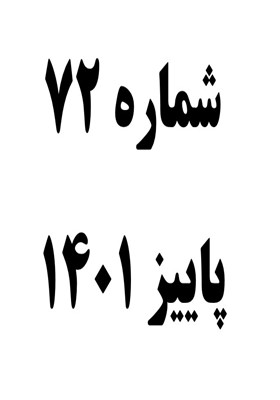شناسایی شاخصه های مدیریت تحول آفرین در مدارس متوسطه جهت ارایه مدل (بر مبنای نمونه مطالعاتی مدارس متوسطه شهرستان اردبیل)
محورهای موضوعی : مدیریت آموزشیحسن اصلان زاده 1 * , مسعود مرادی 2 , محمد مجتبی زاده 3
1 - دانشجوی دکتری علوم تربیتی گرایش مدیریت آموزشی، واحد زنجان، دانشگاه آزاد اسلامی، زنجان، ایران. Hasanaslanzadeh1400@gmail.com
2 - دانشیار گروه روان شناسی، دانشگاه زنجان، زنجان، ایران. Massod76@yahoo.com
3 - استادیار گروه مدیریت و علوم اداری، واحد خدابنده، دانشگاه آزاد اسلامی، خدابنده، ایران. m.mojtabazadeh@yahoo.com
کلید واژه: تحلیل عاملی, الگو, نظریه داده بنیاد, مدیریت تحول آفرین,
چکیده مقاله :
هدف پژوهش حاضر، شناسایی شاخصه های لازم جهت طراحی الگوی مناسب مدیریت تحول آفرین برای مدارس متوسطه است. پژوهش از طریق رویکرد ترکیبی (کیفی-کمی) انجام گرفت. در مرحله کیفی از روش داده بنیاد استفاده شد و برای دستیابی به مدل پژوهش از مصاحبه نیمه ساختاریافته بهره گرفته شد و جامعه مورد بررسی متشکل از منتخبین خبرگان شامل اساتید دانشگاهی و مدیران کلان آموزش و پرورش بود که در زمینه موضوع مورد نظر تخصص و تجریه داشتند. به این منظور ، تعداد 30 نمونه از طریق نمونهگیری هدفمند غیراحتمالی و رویکرد اشباع نظری انتخاب شد. در بخش کمی، جامعه آماری، شامل تمام مدیران و معلمان مدارس متوسطه شهرستان اردبیل، در سال تحصیلی 1400-1399، به تعداد 1714 نفر بود که با استفاده از جدول کرجسی و مورگان (1970)، از طریق روش نمونهگیری تصادفی ساده، 314 نفر به عنوان نمونه پژوهش انتخاب شد، سپس پرسشنامه مقایسه زوجی تهیه و توسط مدیران و معلمان مرتبط تکمیل گردید. اعتبارسنجی بخش کیفی به روش بازآزمون انجام گرفت و در بخش کمی نیز از روش شاخص روایی محتوایی و ضریب آلفای کرونباخ استفاده گردید که گویای اعتبار و پایایی هر دو بخش کیفی و کمی بود. نتایج نشان داد، عوامل تسهیل در برنامهریزی و آموزش؛ مدیریت و نگهداشت منابع انسانی؛ خلق نوآوری؛ رهبری حمایتی؛ خودمدیریتی؛ رهبری انگیزشی؛ طراحی سیستم مدیریت عملکردسازمانی، اثربخشی و استراتژی محوری عوامل مدیریت تحولآفرین هستند. همچنین، برازش الگوی مدیریت تحولآفرین با استفاده از روش تحلیل عاملی تأیید شد. بنابراین، نتیجهگیری شد، الگوی ارائهشده دارای چارچوب مطلوب برای مدیریتتحولآفرین مدارس متوسطه است.
The purpose of this research is to identify the necessary indicators to design a suitable model of transformational management for secondary schools.The research was conducted through a mixed (qualitative-quantitative) approach. In the qualitative phase, the Foundation's data method was used, and semi-structured interviews were used to obtain the research model, and the research community consisted of selected experts, including university professors and general managers of education, who had expertise and experience in the subject. For this purpose, 30 samples were selected through non-probability targeted sampling and theoretical saturation approach. In the quantitative part, the statistical population, including all principals and teachers of secondary schools in Ardabil city, in the academic year of 1399-1400, was 1714 people, using the table of Karjesi and Morgan (1970), through the simple random sampling method, 314 people It was selected as a sample of the research, then a paired comparison questionnaire was prepared and completed by managers and related teachers. Validation of the qualitative part was done by retest method, and in the quantitative part, the method of content validity index and Cronbach's alpha coefficient was used, which indicated the validity and reliability of both qualitative and quantitative parts. The results showed that facilitating factors in planning and education; Management and maintenance of human resources; creating innovation; supportive leadership; self-management; motivational leadership; Organizational performance management system design, effectiveness and strategy are the key factors of transformational management. Also, the fit of the transformational management model was confirmed using the factor analysis method.
_||_

